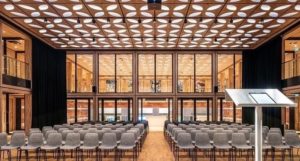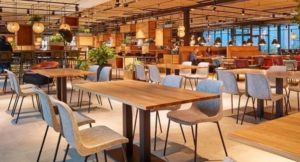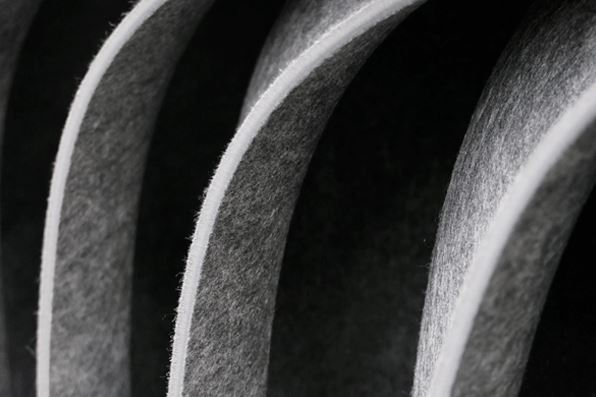WHAT EXACTLY IS FELT
Felt is the umbrella name for textiles that have not been spun and woven. We therefore also call it non-woven material. Tip of the veil: it does not necessarily have to be made of wool. It is not only practical but also very decorative. It is the archetype of textile production, as it was made before weaving and knitting were invented.
It is a misunderstanding that felt can only be made from wool. It is possible to produce felt from all natural raw materials from which fibers can be made. This certainly applies in the first instance to wool, but also, for example, to hemp or flax and even bamboo. But how does a felt product suddenly form from those natural fibers? We distinguish two ways to produce this material: wet felting and needle felting.
MACHINE PRODUCTION
With the needle felting technique, a dry package of wool is systematically pierced with one or more special felting needles. The barbs attached to these needles push the woolen fibers together. This way the felt becomes tighter and denser. Thanks to this technique, all kinds of playful colours and shapes can be made. It is also possible to produce thick fiber mats that are pressed together with the help of needles, hence the name needle felt. Needle felt has the important advantage that it can be easily produced by machine using needle rollers.
PRESS
The application possibilities of felt are very wide thanks to the good properties of the material. Just think about fashion: jackets, bags, hats and much more. There are also countless examples in the furniture industry and interior construction, especially from this time. For example, compressed ‘blankets’ made of needle felt, made from PET bottles, are the basis for the production of the Press chair and high stool.
The shell of the Press chair feels like a normal upholstered chair, while it mainly consists of recycled PET bottles. View the collection here.


SURPRISING EFFECT
Anyone who has ever made a piece of felt knows how special and laborious the process of wet felting is. Tufts of wool are moistened and rubbed and pressed together firmly, with or without steam. The scaly wool fibers are pressed together and a typical and surprising effect is created: the fibers catch on each other and become tangled. When the fiber mass subsequently dries, it will also shrink. As a result, the felt becomes even more compact and feels firmer. Compare it with a woolen garment that you wash too hot.
PET BOTTLES
Much felt is still made from wool. But modern felt is becoming increasingly popular, for example because of its strength. For example, synthetic fibers are used. For example, nowadays there are good techniques for melting PET bottles into usable fibers. During the production process, this ensures that the felt is compressed into one mass, while the surface still retains its fibrous structure.
ADVANTAGES OF FELT
- Sound absorbing
- Wear resistant
- Comfortable
- Decorative
- Sustainable

